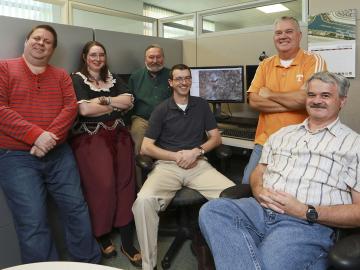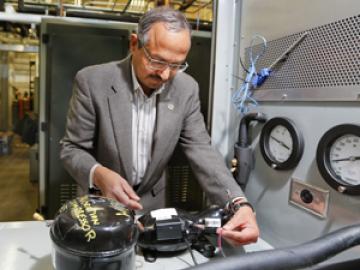Filter News
Area of Research
- (-) Building Technologies (4)
- (-) Geographic Information Science and Technology (2)
- Advanced Manufacturing (5)
- Biological Systems (3)
- Biology and Environment (52)
- Biology and Soft Matter (2)
- Chemical and Engineering Materials (2)
- Chemistry and Physics at Interfaces (6)
- Clean Energy (90)
- Computational Biology (1)
- Computational Chemistry (1)
- Computer Science (1)
- Electricity and Smart Grid (1)
- Energy Frontier Research Centers (7)
- Functional Materials for Energy (8)
- Fusion and Fission (15)
- Fusion Energy (1)
- Isotope Development and Production (1)
- Isotopes (3)
- Materials (82)
- Materials for Computing (6)
- Materials Synthesis from Atoms to Systems (5)
- Materials Under Extremes (6)
- National Security (25)
- Neutron Data Analysis and Visualization (2)
- Neutron Science (24)
- Nuclear Science and Technology (6)
- Quantum Condensed Matter (2)
- Reactor Technology (1)
- Renewable Energy (1)
- Supercomputing (59)
- Transportation Systems (2)
News Type
News Topics
Media Contacts

Oak Ridge National Laboratory researchers demonstrated that microchannel heat exchangers in heating, ventilation and air conditioning units can keep refrigerants evenly and continually distributed by inserting a device called a piezoelectric-driven

Oak Ridge National Laboratory researchers demonstrated that an electrochemical sensor paired with a transmitter not only detects propane leaks within seconds, but it can also send a signal to alert emergency services.

Bruce Lester has had a lot of jobs: fisherman, horse trainer, “professional stair builder.” He last worked for a real estate company, surveying land using geographic software. “When the bottom fell out of the construction industry and the company downsized, I got laid off,”

A research demonstration unveiled today at the Department of Energy’s Oak Ridge National Laboratory combines clean energy technologies into a 3D-printed building and vehicle to showcase a new approach to energy use, storage and consumption. The Additive Manufactur...

The Department of Energy’s Oak Ridge National Laboratory and Whirlpool Corporation are collaborating to design a refrigerator that could cut energy use by up to 40 percent compared with current models





